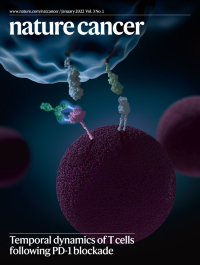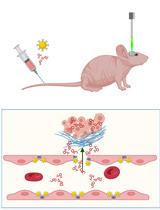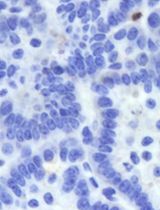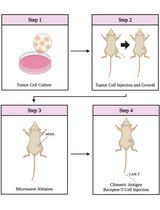- EN - English
- CN - 中文
Ex vivo Drug Sensitivity Imaging-based Platform for Primary Acute Lymphoblastic Leukemia Cells
原发性急性淋巴细胞白血病细胞体外药敏成像平台
(§ Technical contact) 发布: 2023年08月05日第13卷第15期 DOI: 10.21769/BioProtoc.4731 浏览次数: 3277
评审: Rajesh RanjanSalah BoudjadiDipak Kumar Poria
Abstract
Resistance of acute lymphoblastic leukemia (ALL) cells to chemotherapy, whether present at diagnosis or acquired during treatment, is a major cause of treatment failure. Primary ALL cells are accessible for drug sensitivity testing at the time of new diagnosis or at relapse, but there are major limitations with current methods for determining drug sensitivity ex vivo. Here, we describe a functional precision medicine method using a fluorescence imaging platform to test drug sensitivity profiles of primary ALL cells. Leukemia cells are co-cultured with mesenchymal stromal cells and tested with a panel of 40 anti-leukemia drugs to determine individual patterns of drug resistance and sensitivity (“pharmacotype”). This imaging-based pharmacotyping assay addresses the limitations of prior ex vivo drug sensitivity methods by automating data analysis to produce high-throughput data while requiring fewer cells and significantly decreasing the labor-intensive time required to conduct the assay. The integration of drug sensitivity data with genomic profiling provides a basis for rational genomics-guided precision medicine.
Key features
• Analysis of primary acute lymphoblastic leukemia (ALL) blasts obtained at diagnosis from bone marrow aspirate or peripheral blood.
• Experiments are performed ex vivo with mesenchymal stromal cell co-culture and require four days to complete.
• This fluorescence imaging–based protocol enhances previous ex vivo drug sensitivity assays and improves efficiency by requiring fewer primary cells while increasing the number of drugs tested to 40.
• It takes approximately 2–3 h for sample preparation and processing and a 1.5-hour imaging time.
Graphical overview

BM: bone marrow; PB: peripheral blood; ALL: acute lymphoblastic leukemia; MNCs: mononuclear cells, which include leukemia cells when present; MSCs: mesenchymal stromal cells; LC50: drug concentration that kills 50% of the leukemia cells
Background
Acute lymphoblastic leukemia (ALL) is a heterogenous disease that can be grouped into multiple B- and T-lineage genomic subtypes (Inaba and Mullighan, 2020; Inaba and Pui, 2021; Brady et al., 2022). While five-year survival rates for many pediatric B-cell ALL (B-ALL) subtypes can exceed 90%, survival rates are lower for adults who have more treatment-resistant B-cell ALL, particularly those with Ph-like ALL (Foà et al., 2011). Similarly, survival for certain subtypes of T-cell ALL (T-ALL) remains below 80% (Karrman and Johansson, 2017) and outcomes following relapse for both pediatric and adult patients with ALL remain dismal (Pocock et al., 2021; Laukkanen et al., 2022; Wudhikarn et al., 2022). Because of its high incidence, ALL remains the most common cause of death from childhood cancer. Treatment efficacy in ALL varies by molecular subtype and secondary genomic alterations (Pui et al., 2012; Brady et al., 2022). Progress in understanding the heterogeneity of the genomics of ALL has provided insight into actionable drug targets (Meyer et al., 2013; Irving et al., 2014; Khaw et al., 2016; Gocho et al., 2021; Brady et al., 2022). Molecularly targeted agents have shown efficacy in some subtypes of high-risk B-ALL disease. There is a need for further development of molecularly targeted therapy optimized based on characteristics of an individual patient’s cancer cells (Carroll et al., 2003; Brady et al., 2022; Lee et al., 2023).
Functional precision medicine approaches combine direct drug sensitivity profiling (i.e., pharmacotyping) with genomic testing to elucidate the biological basis of variability in treatment response (Frismantas et al., 2017; Kornauth et al., 2022; Lee et al., 2023). Defining inter-patient variability in leukemia cell drug sensitivity is a starting point for observing patterns of sensitivity to antileukemia agents. Drug sensitivity profile groups have been associated with treatment outcome, including event-free survival and cumulative risk of relapse (Holleman et al., 2004; Pieters et al., 2007; Lee et al., 2023). ALL drug sensitivity phenotype has likewise been associated with clinical characteristics and somatic genomic features (Pieters et al., 1993; Ramakers-van Woerden et al., 2002; Holleman et al., 2004; Ramakers-van Woerden et al., 2004; Lugthart et al., 2005; Pui et al., 2019). Pharmacotyping profiles have the potential to drive research to uncover new subtype-specific therapeutic opportunities for ALL.
Both flow cytometry–based and the 3-(4,5-dimethylthiazol-2-yl)-2,5-diphenyl-tetrazoliumbromide (MTT)–based drug-resistance assays have served as reliable methods in our laboratory for quantification of B- and T-ALL leukemia cell viability upon exposure to antineoplastic agents (Holleman et al., 2004; Paugh et al., 2015; Autry et al., 2020; Gocho et al., 2021; Lee et al., 2023). We have used flow cytometry–based methods and MTT-based methods for sensitivity testing of leukemia cell lines, patient-derived xenografts (PDX), and primary patient samples; however, in our experience, these assays are markedly limited by requirements for high cell count at plating, prolonged time requirements to complete the assay and data analyses, and lack of high-throughput potential for screening of antineoplastic drugs against samples (Gocho et al., 2021). Ex vivo models have used human bone marrow mesenchymal stromal cells (MSC) to support leukemia cells in culture for functional experiments (Boutter et al., 2014). Other groups have published functional precision medicine methods using automated microscopic imaging to test drug sensitivity of PDX cells from clinically relevant ALL subgroups (Frismantas et al., 2017). Here, our group has established an ex vivo pharmacotyping platform to directly profile leukemia cells from individual patients for drug sensitivity using high-content imaging. Coupling data derived from this platform with patient genomic profiles has the potential to catapult the development of new ALL therapy using actionable target and biomarker discovery.
Here, we present our methodology for a high-throughput imaging-based assay for leukemia cell viability to identify effective cytotoxic and targeted anti-leukemia agents. Using a biologically realistic leukemia cell and MSC co-culture as described by other groups (Frismantas et al., 2017), our imaging system has produced high-throughput viability data with potential for further image analyses. This method is used to assess inter-patient differences in drug sensitivity related to patient age, sex, molecular subtypes of leukemia, and genomics, and to discover mechanisms of drug resistance in patients with ALL (Autry et al., 2020; Gocho et al., 2021; Lee et al., 2023). This knowledge may in turn be used to build more robust precision medicine approaches to improve cure rates, and to create future avenues to facilitate the rational use of molecularly targeted therapy. This protocol includes methods for this imaging-based functional precision medicine assay.
Materials and reagents
Biological materials
hTERT immortalized human bone marrow mesenchymal stromal cells (MSCs) (Applied Biological Materials, Inc., catalog number: T0523)
Reagents
AIM-V medium, 1,000 mL (Gibco, catalog number: 12055-083)
Hydrocortisone-water soluble (Sigma, catalog number: H0396)
RPMI 1640 medium, 500 mL (Gibco, catalog number: 11875-093)
Fetal bovine serum, certified, heat inactivated (Gibco, catalog number: 10082-147)
DMSO (Sigma, catalog number: D2660-100ML)
PBS, pH 7.4, 500 mL (Gibco, catalog number: 10010-023)
CyQUANTTM Direct Cell Proliferation Assay Green (Invitrogen, catalog number: C35012)
ViaStain AOPI staining solution (Nexcelom, catalog number: CS2-0106-25mL)
Trypsin-EDTA 0.25% (Gibco, catalog number: 25200-056)
Antibiotic antimycotic 100× (Gibco, catalog number: 15240-062)
RPMI 1640 without phenol red & L-glutamine (Lonza, catalog number: 12-918F)
0.5 M EDTA pH 8.0 (Gibco, catalog number: 15575-038)
0.9% sodium chloride (Baxter, catalog number: 2F7123)
Insulin-transferrin-selenium 100× (Gibco, catalog number: 41400045)
L-Glutamine 200 mM (Gibco, catalog number: A2916801)
0.1 N sodium hydroxide (Fisher Scientific, catalog number: AC124190010)
AmbionTM nuclease-free water (Invitrogen, catalog number: AM9937)
Ultrapure (Type 1) water
Drug stock solutions (Table 1)
Table 1. Drug stock solutions
# Name Vendor Catalog number Stock concentration Storage Diluent Concentration range Dilution factor 1 Trametinib MedChemExpress HY-10999 10 mM -80 °C DMSO 0.01–1,000 nM 10 2 Gilteritinib MedChemExpress HY-12432 10 mM -80 °C DMSO 0.1–10,000 nM 10 3 Venetoclax MedChemExpress HY-15531 10 mM -80 °C DMSO 0.001–100 nM 10 4 Inotuzumab Pfizer NA 0.25 mg/mL -80 °C Nuclease-free water 0.0025–250 ng/mL 10 5 Palbociclib MedChemExpress HY-50767A 10 mM -80 °C DMSO 0.1–10,000 nM 10 6 CHZ868 MedChemExpress HY-18960 10 mM -80 °C DMSO 0.1–10,000 nM 10 7 Dasatinib Selleckchem S1021 10 mM -80 °C DMSO 0.1–10,000 nM 10 8 Ibrutinib MedChemExpress HY-10997 50 mM -80 °C DMSO 1.5625–50 mM 2 9 6-mercaptopurine Acros Organics 226520050 5 mg/mL -20 °C 0.1 N NaOH 91.8–2,938 mM 2 10 Prednisolone Pfizer 00009004722 12.5 mg/mL -20 °C 0.9% NaCl 0.015–503.5 mM 8 11 L-asparaginase BioVendor RP1792872500 500 IU/mL -80 °C Type 1 water 0.0032–10 IU/mL 5 12 Vincristine Hospira 61703030906 0.25 mg/mL -20 °C Type 1 water 0.0017–54.169 mM 8 13 Nelarabine Sigma-Aldrich SML1736 200 mM -20 °C DMSO 1.03–250 mM 3 14 Bortezomib St. Jude Compound Management SJ000518968 10 mM -80 °C DMSO 0.98–1,000 nM 4 15 Vorinostat Sellekchem S1047 100 mM -80 °C DMSO 102.88–25,000 nM 3 16 Daunorubicin Teva 00703523313 0.1 mg/mL -20 °C Type 1 water 0.004–3.55 mM 4 17 Luminespib MedChemExpress HY-10215 10 mM -80 °C DMSO 0.01–1,000 nM 10 18 Clofarabine MedChemExpress HY-A0005 10 mM -80 °C DMSO 0.1–10,000 nM 10 19 Olaparib MedChemExpress HY-10162 10 mM -80 °C DMSO 0.1–10,000 nM 10 20 Selinexor Selleckchem S7252 10 mM -80 °C DMSO 0.1–10,000 nM 10 21 Ponatinib MedChemExpress HY-12047 10 mM -80 °C DMSO 0.1–10,000 nM 10 22 Saracatinib MedChemExpress HY-10234 10 mM -80 °C DMSO 0.1–10,000 nM 10 23 Acalabrutinib MedChemExpress HY-17600 10 mM -80 °C DMSO 0.1–10,000 nM 10 24 Momelotinib MedChemExpress HY-10961 10 mM -80 °C DMSO 0.1–10,000 nM 10 25 Midostaurin MedChemExpress HY-10230 10 mM -80 °C DMSO 0.1–10,000 nM 10 26 Fostamatinib MedChemExpress HY-13038A 10 mM -80 °C DMSO 0.1–10,000 nM 10 27 Larotrectinib MedChemExpress HY-12866 10 mM -80 °C DMSO 0.1–10,000 nM 10 28 Repotrectinib MedChemExpress HY-103022 10 mM -80 °C DMSO 0.1–10,000 nM 10 29 Sorafenib MedChemExpress HY-10201 10 mM -80 °C DMSO 0.1–10,000 nM 10 30 Everolimus MedChemExpress HY-10218 10 mM -80 °C DMSO 0.1–10,000 nM 10 31 Sotorasib (AMG-510) MedChemExpress HY-114277 10 mM -80 °C DMSO 0.1–10,000 nM 10 32 Birinapant MedChemExpress HY-16591 10 mM -80 °C DMSO 0.1–10,000 nM 10 33 SNDX-5613 MedChemExpress HY-136175 10 mM -80 °C DMSO 0.1–10,000 nM 10 34 Iadademstat MedChemExpress HY-12782T 10 mM -80 °C DMSO 0.1–10,000 nM 10 35 EPZ4777 (EPZ004777) MedChemExpress HY-15227 10 mM -80 °C DMSO 0.1–10,000 nM 10 36 JQ1 MedChemExpress HY-13030 10 mM -80 °C DMSO 0.1–10,000 nM 10 37 Eprenetapopt (APR-246) MedChemExpress HY-19980 10 mM -80 °C DMSO 0.1–10,000 nM 10 38 S63845 MedChemExpress HY-100741 10 mM -80 °C DMSO 0.001–100 nM 10 39 Navitoclax MedChemExpress HY-10087 10 mM -80 °C DMSO 0.01–1,000 nM 10 40 Carfilzomib MedChemExpress HY-10455 10 mM -80 °C DMSO 0.0001–10 nM 10
Solutions
1 mM hydrocortisone stock solution (see Recipes)
Cell medium (see Recipes)
MSC medium (see Recipes)
Recipes
1 mM hydrocortisone stock solution
Reagent Final concentration Amount Hydrocortisone-water soluble 1 mM 100 mg Type 1 water n/a 23.45 mL Total n/a 23.45 mL Cell medium
Reagent Final concentration Amount RPMI w/o phenol red & L-glutamine n/a 500 mL Antibiotic antimycotic 1× 6.25 mL L-Glutamine 2 mM 6.25 mL Insulin-transferrin-selenium 1× 6.25 mL Heat-inactivated fetal bovine serum 20% 125 mL Total n/a 643.75 mL MSC medium
Reagent Final concentration Amount 1 mM hydrocortisone-water soluble 1 μM 0.625 mL RPMI-1640 n/a 500 mL Heat-inactivated fetal bovine serum 20% 125 mL Total n/a 625.625 mL
Laboratory supplies
384-well plates (PerkinElmer, Phenoplate, catalog number: 6057302)
10 mL pipettes (Corning, catalog number: 4101)
25 mL pipettes (Corning, catalog number: 4237)
15 mL conical tubes (Falcon, catalog number: 352097)
50 mL conical tubes (Falcon, catalog number: 352098)
Microtubes 1.5 mL (Axygen, catalog number: MCT-150-L-C)
Microtubes 0.6 mL (Axygen, catalog number: MCT-060-L-C)
Stericup quick release Millipore express 0.22 μM PES 500 mL (Millipore, catalog number: 6346)
10 cm dishes (Corning, catalog number: 353003)
20 μL filter tips (Rainin, catalog number: 30389225)
200 μL filter tips (Rainin, catalog number: 30389239)
1,000 μL filter tips (Rainin, catalog number: 30389212)
125 μL tips XYZ rack of 384 griptips (Integra, catalog number: 6465)
125 μL tips ECO rack of 384 griptips (Integra, catalog number: 3425)
150 mL reagent reservoirs (Integra, catalog number: 6318)
Equipment
Operetta CLSTM high-content analysis system (PerkinElmer, HH1600000)
STR4 plus series centrifuge (Thermo Scientific, catalog number: 75016037)
BX41 microscope (Olympus, catalog number: BX41-PH-B)
Tuberoller (Benchmark, catalog number: R3010)
Nikon Eclipse TS100 microscope (Nikon, catalog number: NI-TS100)
IsoTemp digital controlled water bath (Fisher Scientific, model: 2320)
TC10 automated cell counter (Bio-Rad, catalog number: 145-0010)
Sorvall Legend X1R centrifuge (Thermo Scientific, catalog number: 75004260)
Heracell 150i CO2 incubator (Thermo Scientific, catalog number: 51032719)
VIAFLO 384 automated pipette (Integra, catalog number: 6031)
VIAFLO 384-well 5–125 μL pipette head (Integra, catalog number: 6132)
VOYAGER 12-channel 5–125 μL pipette (Integra, catalog number: 4732)
1300 Series Class II A2 biological safety cabinet (Thermo Scientific, catalog number: 1323TS)
Software
Harmony software (4.9, 2019)
Prism v9.3 (GraphPad, 11/15/2021)
Microsoft office suite
Procedure
文章信息
版权信息
© 2023 The Author(s); This is an open access article under the CC BY-NC license (https://creativecommons.org/licenses/by-nc/4.0/).
如何引用
Rowland, L., Smart, B., Brown, A., Dettorre, G. M., Gocho, Y., Hunt, J., Yang, W., Yoshimura, S., Reyes, N., Du, G., John, A., Maxwell, D., Stock, W., Kornblau, S., Relling, M. V., Inaba, H., Pui, C. H., Bourquin, J. P., Karol, S. E., Mullighan, C. G., Evans, W. E., Yang, J. J. and Crews, K. R. (2023). Ex vivo Drug Sensitivity Imaging-based Platform for Primary Acute Lymphoblastic Leukemia Cells. Bio-protocol 13(15): e4731. DOI: 10.21769/BioProtoc.4731.
分类
癌症生物学 > 通用技术 > 癌症治疗
医学 > 白血病 > 药物敏感性试验
您对这篇实验方法有问题吗?
在此处发布您的问题,我们将邀请本文作者来回答。同时,我们会将您的问题发布到Bio-protocol Exchange,以便寻求社区成员的帮助。
提问指南
+ 问题描述
写下详细的问题描述,包括所有有助于他人回答您问题的信息(例如实验过程、条件和相关图像等)。
Share
Bluesky
X
Copy link












